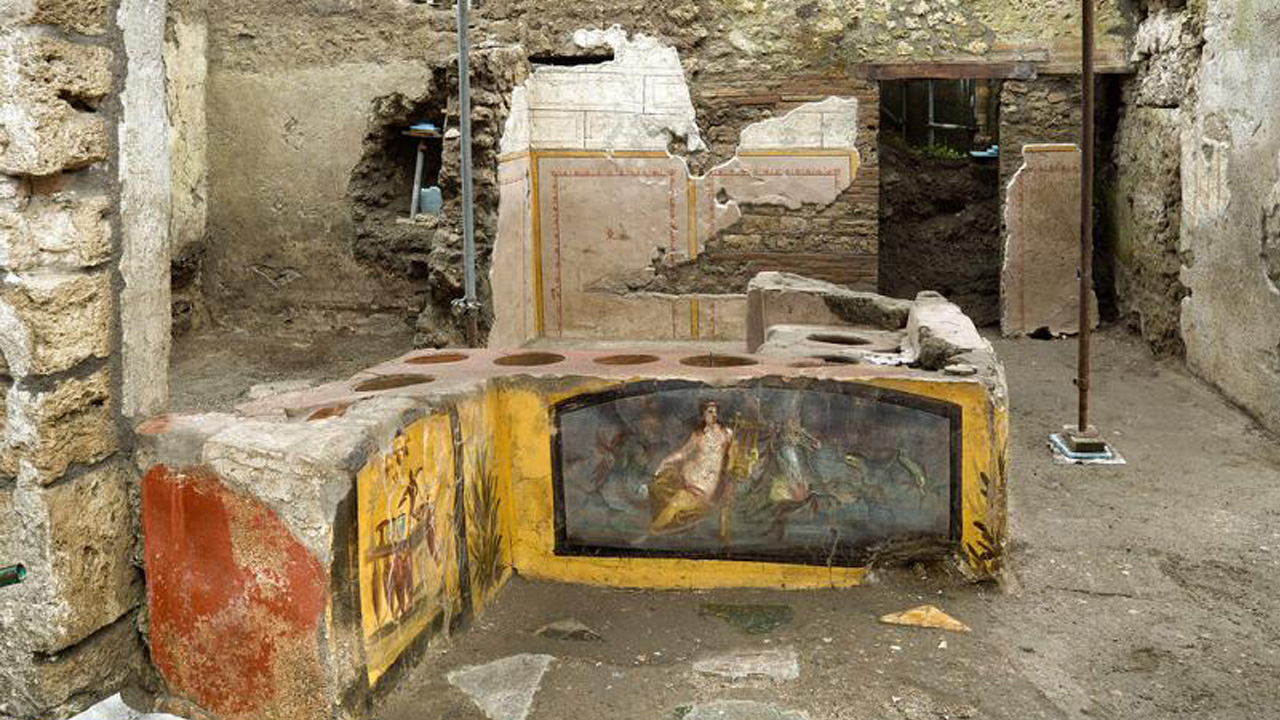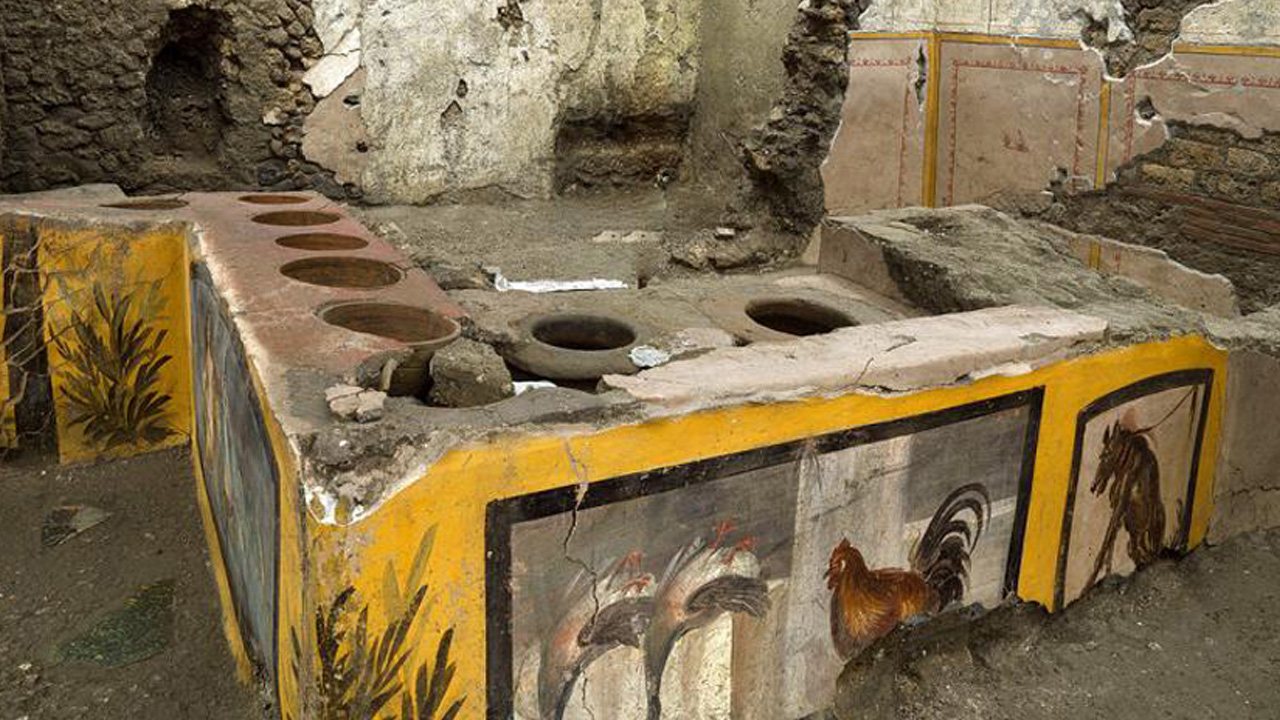2,000-Year-Old Fast-Food Shop Found in Pompeii
Within the scope of the ongoing archeology studies in the ancient Roman city of Pompeii, a fast-food shop, which is estimated to be about 2 thousand years ago, was completely unearthed. 2 thousand-year-old traces of food were found inside the clay pots found on the bench.
Work continues in the ancient Roman city of Pompeii, which was destroyed by the eruption of Mount Vesuvius in 79 AD. As a result of the studies, a fast-food shop, which is thought to date back to 2,000 years ago, was found in the ruins, where the bodies of two men burned to death last month.
The hot food and beverage counter, known as ‘termopolium’ in Latin, is located in the Regio V area of the archaeological park. Archaeologists say this well-preserved fast-food shop was important for understanding the street food culture of the period.
It is the first time that such an ‘extraordinary’ structure has been fully uncovered:

Massimo Osanna, Director of the Pompeii Archaeological Site, said in a statement about the discovery that although there are about 80 fast-food places of this kind in Pompeii, it is the first time that such an “extraordinary” structure has been fully uncovered.
As a result of the investigations, 2,000-year-old traces of food were found on some of the terracotta pots on a loom with circular holes. On the front of the counter, animals such as a chicken decorated with brightly colored frescoes and two ducks hanging upside down are depicted.

The site anthropologist Valeria Amoretti stated that they thought the pictures drawn on the front of the counter could represent the food and drink sold there. Amoretti added that the containers had traces of pork, fish, snails and beef.
Pompeii, which was buried under lava with more than 2 thousand people living in the city after the eruption of Mount Vesuvius in 79 AD, is located 23 kilometers southeast of Naples. It is estimated that approximately 13 thousand people lived in the ancient city, which was found in the 16th century and where archaeological excavations started in 1748, before it was buried under the ashes. The region is also on UNESCO’s world heritage list.
















